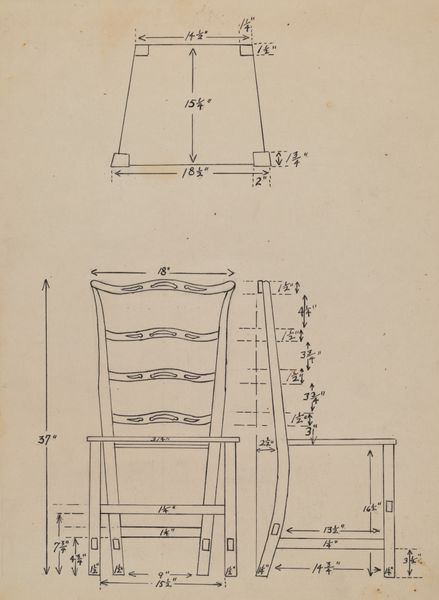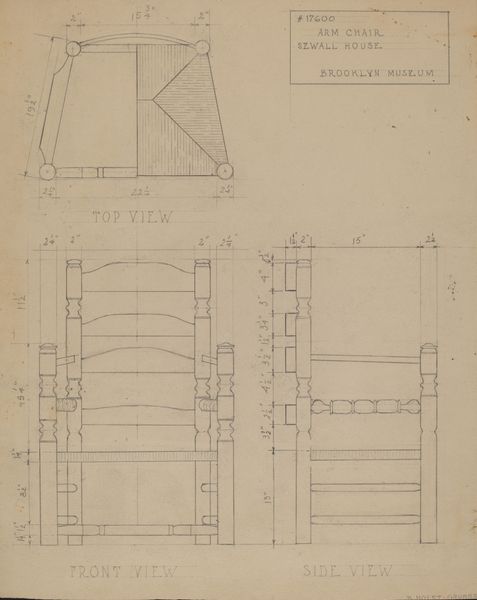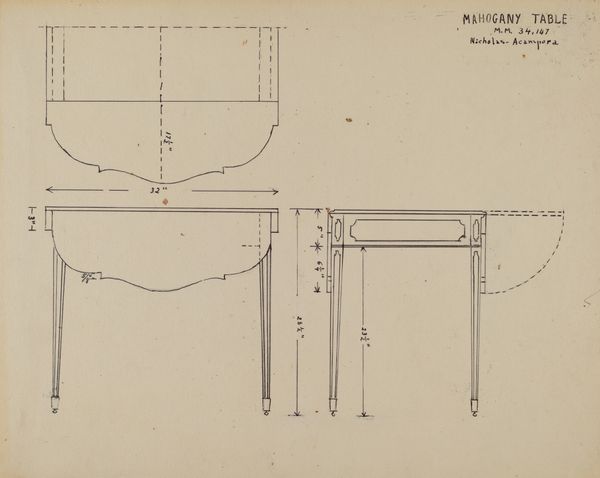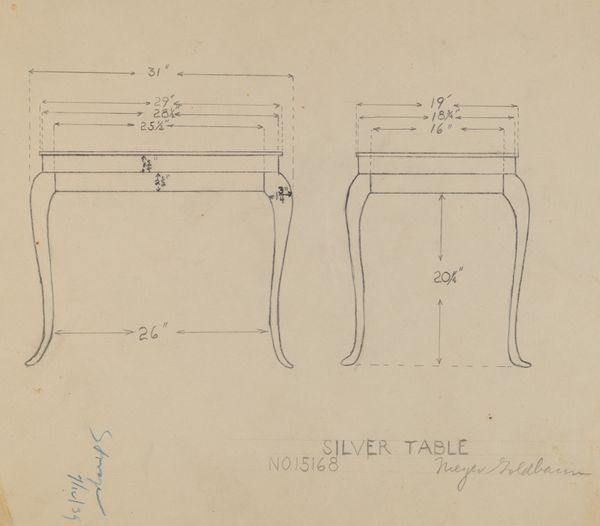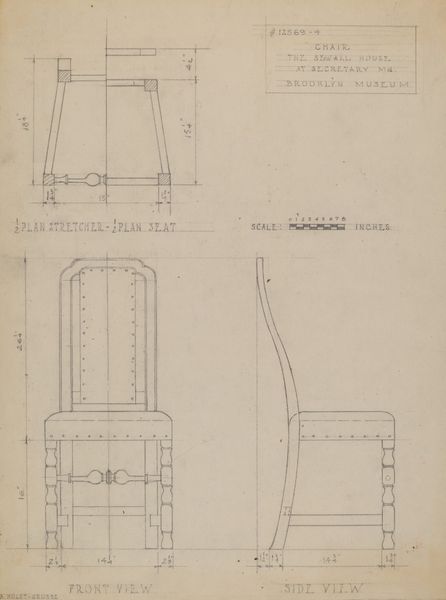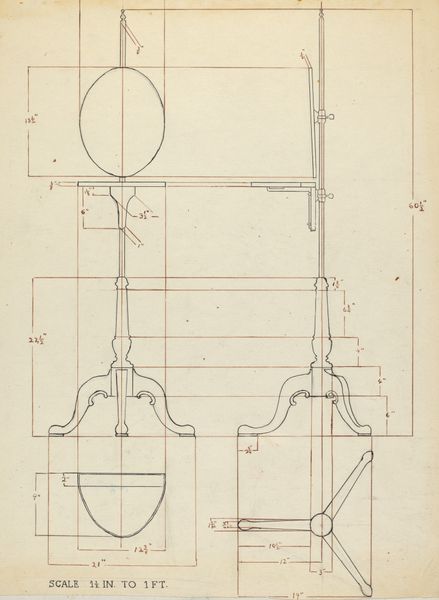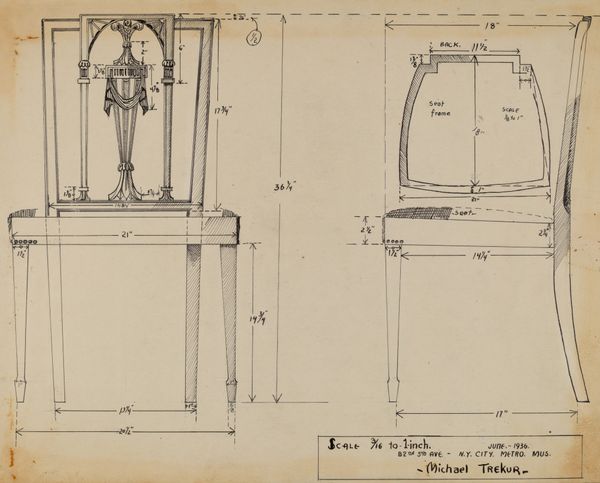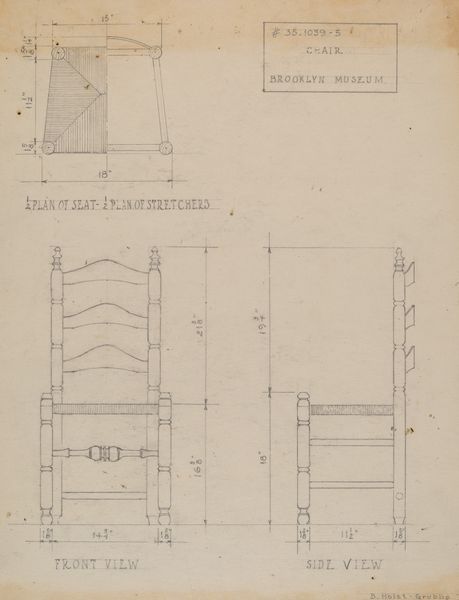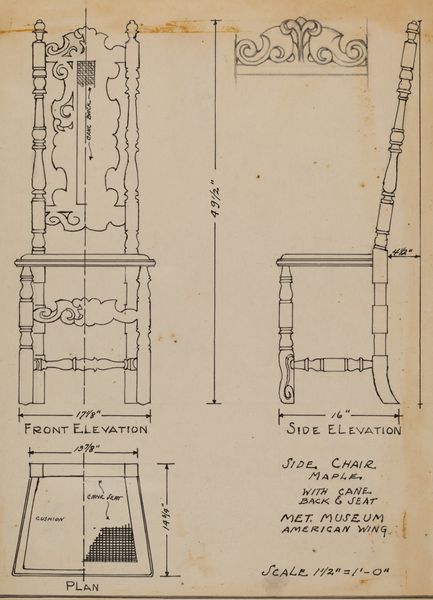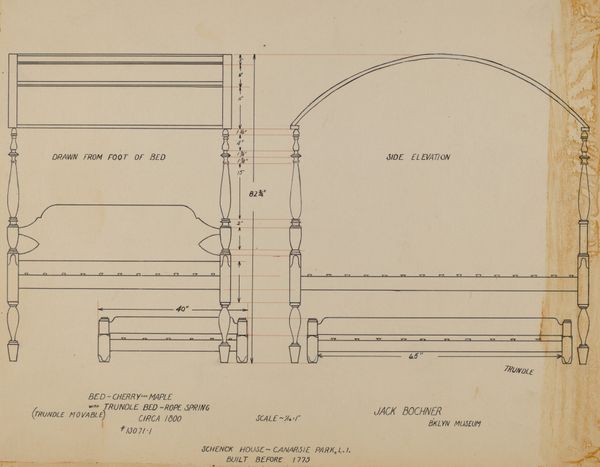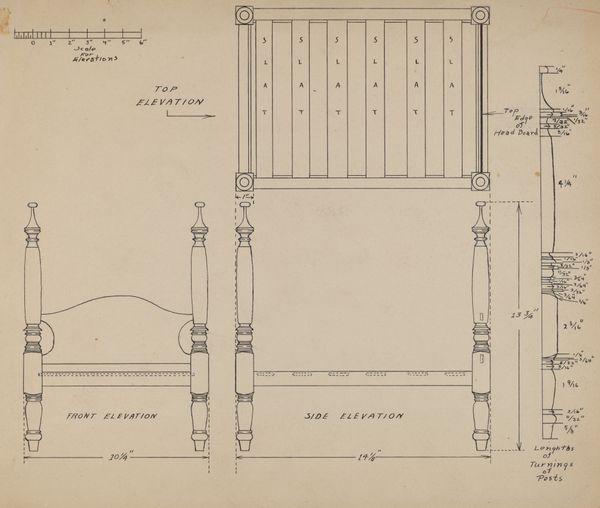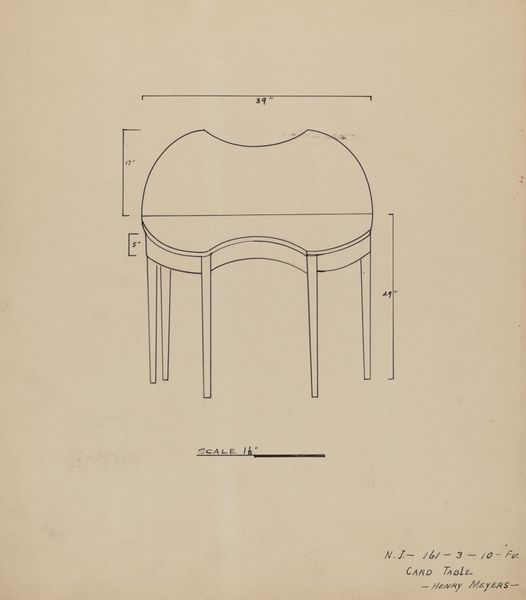
drawing, pencil
#
drawing
#
geometric
#
pencil
#
line
Dimensions: overall: 22.5 x 30.1 cm (8 7/8 x 11 7/8 in.) Original IAD Object: 32 1/2"high; 19"wide; 16"deep
Copyright: National Gallery of Art: CC0 1.0
Editor: Here we have "Kitchen Chair," a drawing dating back to approximately 1935. It’s a pencil rendering with precise, clean lines – almost like an architectural blueprint, or a diagram. What strikes me is how functional and unadorned it appears. What’s your take? Curator: Absolutely. It's not trying to be "art" in the traditional, elevated sense. Look at how it meticulously details the measurements and joins. For me, this resonates with the Depression era’s emphasis on practicality and resourcefulness. We're seeing the value of labor and the necessity of durable, everyday objects. It really begs the question, where do we draw the line between craft and "high art"? What labor goes into everyday object like the titular kitchen chair, and how do we value it? Editor: So, you're saying its value lies in its representation of labor and functional design? Curator: Precisely. And think about the social context. The drawing is held by the New York Historical Society. So we ask: Who would need such detailed plans? Perhaps a carpenter, or maybe someone involved in mass production. Understanding who might have used this document tells us about production of simple chairs, their necessity in an economical age, and the role such a common item played in a culture. Consider the materials—probably locally sourced wood, economically viable—essential factors. Editor: It makes me think about mass production versus handcrafted items and how we value them differently. Curator: Exactly! It invites a conversation on how artistic value is often unfairly attributed while often dismissing other skills and forms of production. I'm seeing a lot more than just a chair here. I see a complex web of social relations woven into the materiality of a seemingly simple object. Editor: I never considered those ideas related to this type of work before. Now I appreciate that simple lines and functional diagrams are often richer with significance than you first realize.
Comments
No comments
Be the first to comment and join the conversation on the ultimate creative platform.
